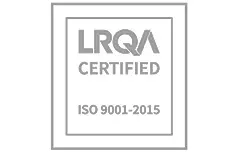
How ULTEM™ 9085 filament created a super-strong 3D printed drone
How do you produce a high-altitude, highly durable and heat-resistant drone with integrated electronics? It would once have taken months of research, a significant investment in plant and machinery and a minimum order number that could only have been achieved with a significant marketing push and awareness-raising campaign.
But not any longer, as proved by Ido Elyon and Stanley Leung of Stratasys Asia Pacific. They teamed up with CubeSat builder Phillip Keane to 3D print a one-off drone that met these exact requirements and massively exceeded the limits of their commercial rivals.
Strong and lightweight
Their material of choice was ULTEM™ 9085 filament, which as Laser Lines’ Richard Hoy explains, is both strong and very light.
Weight is one of the major problems you need to overcome when building something like this, as you also need to accommodate a lot of electrical components, each of which adds to the payload. ULTEM™ 9085 filament makes things much easier, as it’s relatively light compared to other materials, but no less robust.
We are using ULTEM™ 9085 filament to build non-structural aircraft parts for some of our aerospace customers. It’s V-0 rated, which means that should it catch fire, the flame will die in 10 seconds or less, although in reality it’s better than that would suggest.
We have done our own tests, and even when subjected to direct heat from a blowtorch it doesn’t burn or ignite at all – it just melts, without giving off any smoke, gas or toxic fumes. That’s not the case for ABS or polycarbonate, which aren’t suited to flight applications.
ULTEM™ 9085 is just one member in a wide and growing family of materials available to Laser Lines clients.
ULTEM™ 1010 filament , a close alternative to the material employed in the drone, is also approved for aerospace use, just not in the cabin. It’s up in the skies right now, in the form of external 3D printed parts.
The right material for the job
Choosing the best material for any part might leave some customers scratching their heads, which is where Laser Lines can help. It regularly supplies small, simple 3D printed models to customers that need to test a material in a new situation.
Those who need to build containers for fuel, or parts to be used with chemicals, alkali and so on, can dip or submerge the sample in the fluid for as long as required, and either prove or rule out the material’s suitability for each use.
Far from being a time-consuming additional step, this is often enough to let them move straight to production.
If you need to test a part’s fit and form them you might want to use a lower-grade material for a test build, as it will cost less than working directly with ULTEM™ 9085 filament. But once you’ve proved a material’s suitability we’d recommend using it at every stage.
ULTEM™ 9085 filament is around a third more expensive than ABS or polycarbonate, but most Laser Lines clients who intend to use it for their finished objects would employ it throughout design and development, too. This is exactly what Hoy would recommend. Building early iterations with anything else doesn’t give you the same feel or finished weight,” he says. “It’s best to play it safe and use ULTEM™ filament from the off.Richard Hoy
To find out more about ULTEM™ 9085 and the growing range of 3D materials available through Laser Lines’ bureau service, call 01295 672599 or email [email protected]. Our 3D printing experts can advise you on the best design, processes and materials for any project.








